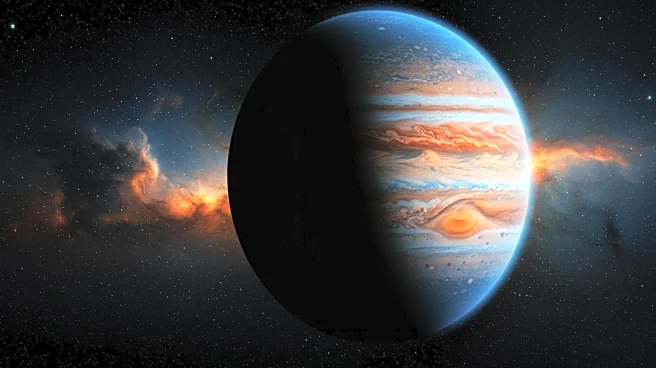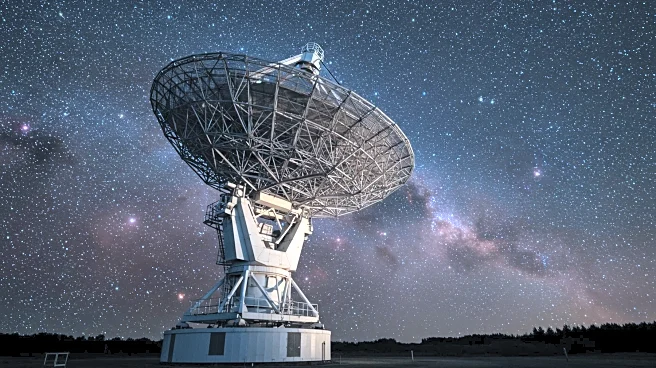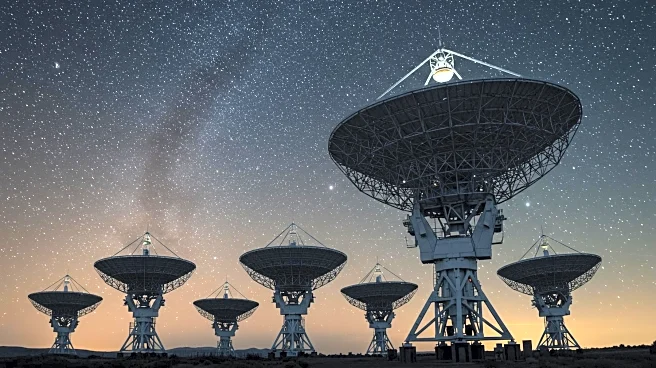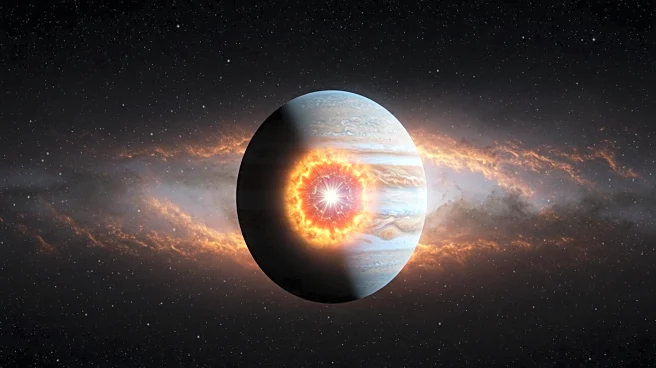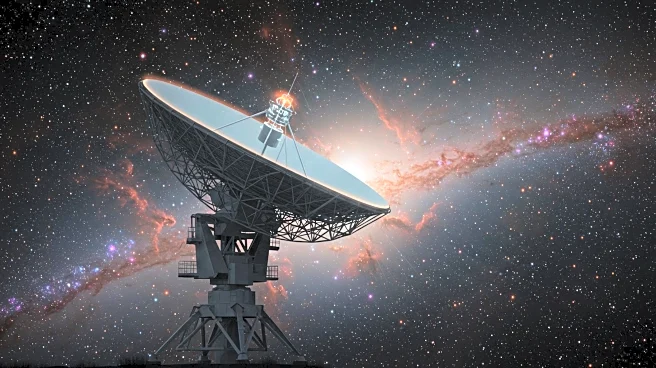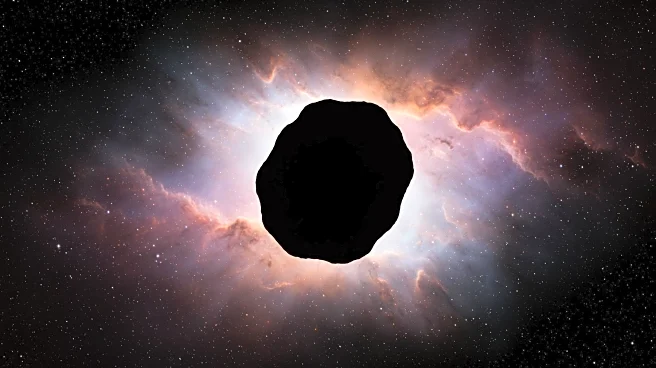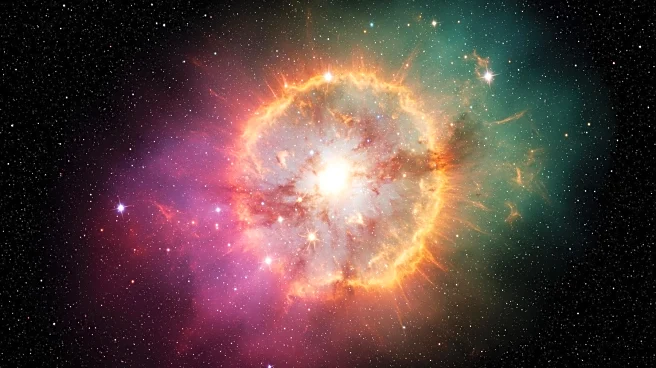What is the story about?
What's Happening?
Recent research has provided new insights into the formation of Jupiter's core, challenging the long-held belief that a massive collision was responsible for its current structure. The study, published in the Monthly Notices of the Royal Astronomical Society, suggests that Jupiter's core is not sharply defined but rather gradually blends into the surrounding hydrogen layers, forming what is known as a dilute core. This finding contradicts the previous theory that a colossal impact with an early planet mixed the core material, leading to its current state. Researchers from Durham University, in collaboration with NASA, SETI, and other institutions, used advanced supercomputer simulations to test the impact hypothesis. The simulations revealed that such a collision would not result in a stable dilute core, as the displaced core material would quickly re-settle, maintaining a distinct boundary with the outer layers.
Why It's Important?
This study has significant implications for our understanding of planetary formation and evolution, not only for Jupiter but also for other gas giants like Saturn, which is also believed to have a dilute core. The findings suggest that these structures are likely formed gradually over time rather than through rare, high-energy impacts. This challenges existing models of planetary development and could influence how scientists interpret the formation of similar exoplanets observed around distant stars. By providing a new perspective on the internal structure of gas giants, the research could lead to a reevaluation of the processes that shape planetary systems, potentially impacting theories on the diversity and evolution of planets both within and beyond our solar system.
What's Next?
The study's authors suggest that further research is needed to explore the gradual formation processes of dilute cores in gas giants. This could involve more detailed simulations and observations to refine our understanding of planetary interiors. Additionally, the development of new simulation techniques, as demonstrated in this study, will continue to enhance our ability to model and understand the complex events that shape planets. As scientists gather more data on exoplanets, these findings could be crucial in interpreting their characteristics and histories, offering insights into the formation of planetary systems across the universe.
Beyond the Headlines
The implications of this study extend beyond planetary science, touching on broader questions about the nature of cosmic evolution and the factors that contribute to the diversity of planetary systems. By challenging the notion that extreme impacts are necessary for certain planetary features, the research opens up new avenues for exploring how planets develop over time. This could lead to a deeper understanding of the conditions that foster the emergence of life and the potential for habitable worlds beyond Earth.
AI Generated Content
Do you find this article useful?
